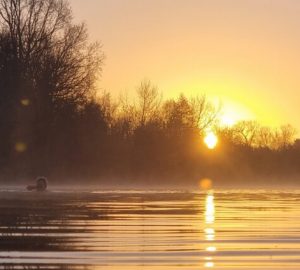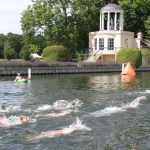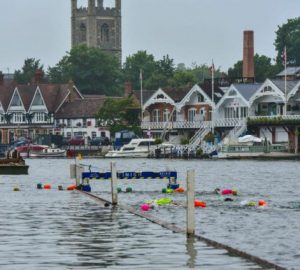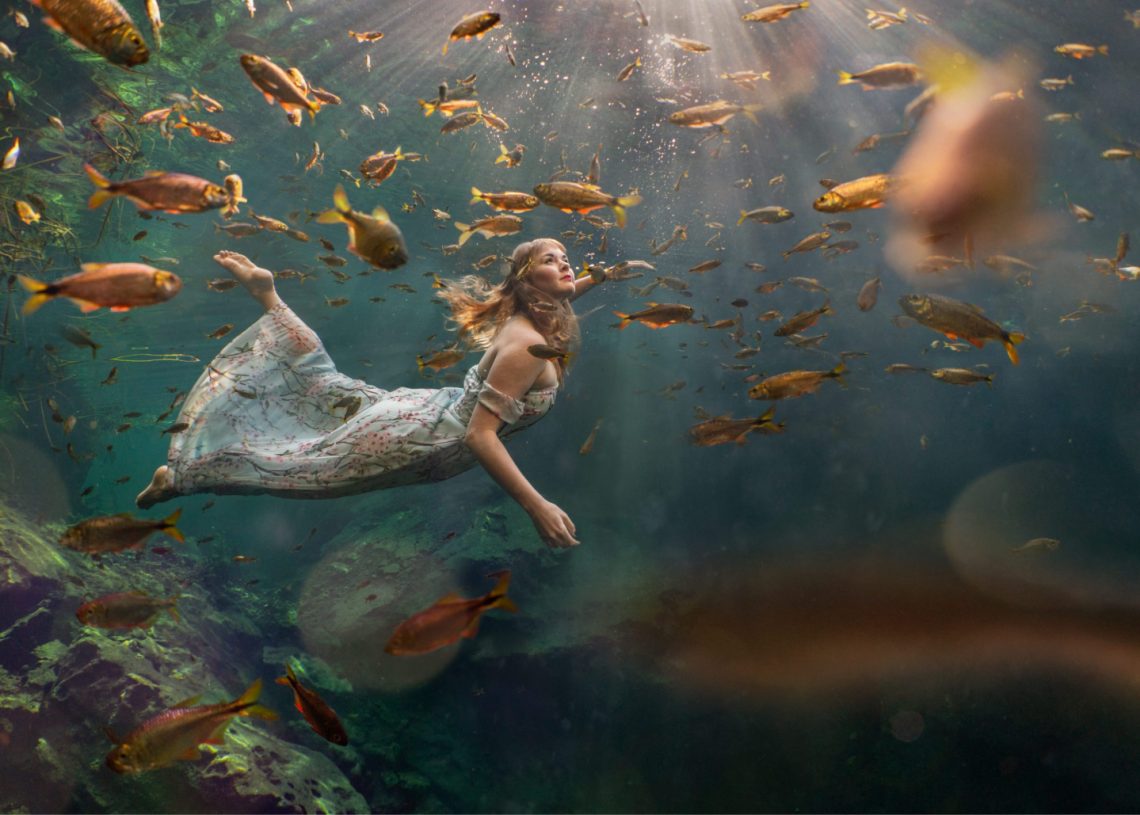
The story behind our ‘underwater’ cover with Lexi Laine
Ethereal, peaceful and otherworldly – freediving photographer Lexi Laine shares the stories behind our April cover.
The April edition of Outdoor Swimmer magazine dives under the water as we discover a remarkable world of wonder, magic, awe, creativity, creatures, challenge and the strange. Stories explore diving for trash in Windermere; one swimmer’s ambition to break records swimming below ice; underwater skills to bring into your training; and the history of diving for pearls.
Freediving photographer Lexi Laine captured April’s themes beautifully in her remarkable cover image (below, left). We spoke to Lexi about the sense of peace she feels while working below the waves, and how this portrait of “a beautiful, adventurous woman in her element” was taking on a rare break from lockdown restrictions in 2020.
Tell us about your cover image for the April issue – what feelings were you trying to capture here?
This photo was taken in 2020 when lockdown restrictions meant that I couldn’t travel to my normal shooting destinations. Instead of going to Mexico I visited my friend and underwater model Laura Evans (aka St Ives Mermaid).
Laura was born and bred in Cornwall and so she knows all of the good spots around the coastline and where to find clear water for underwater photoshoots. This shot was taken in an incredibly secluded tidal pool that only appears at low tide.
Rather than naturally occuring, it is believed that the tin miners in the area created a lot of the tidal pools by blasting holes in the rock with dynamite. They made these pools so that they could cool off after a shift in the mines and to create a safe swimming spot for their families to bathe.
I have always loved Cornwall, but my trip during Covid times was such a welcome break. We had a real sense of freedom that day. Laura had just bought this colourful, vintage 1980s dress and we headed out on a little trek to this pool to take some photos of her wearing it. There was no big idea for the image, but the result will always remind me of this sense of playfulness and escape. I also love how it represents Laura; it’s a portrait of a beautiful, adventurous woman in her element.
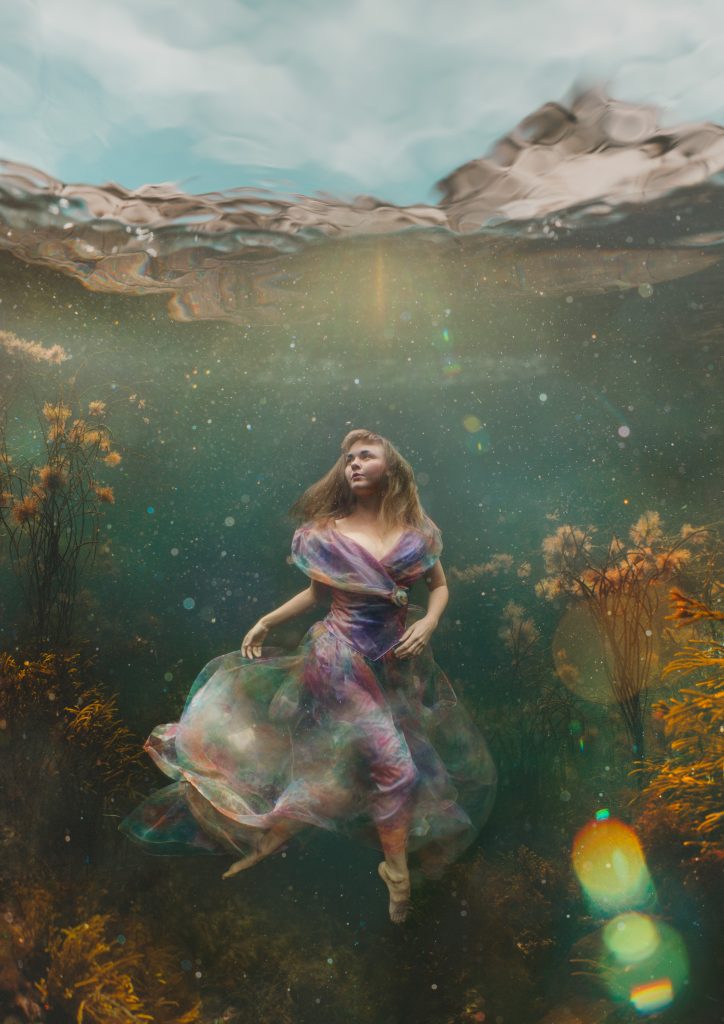
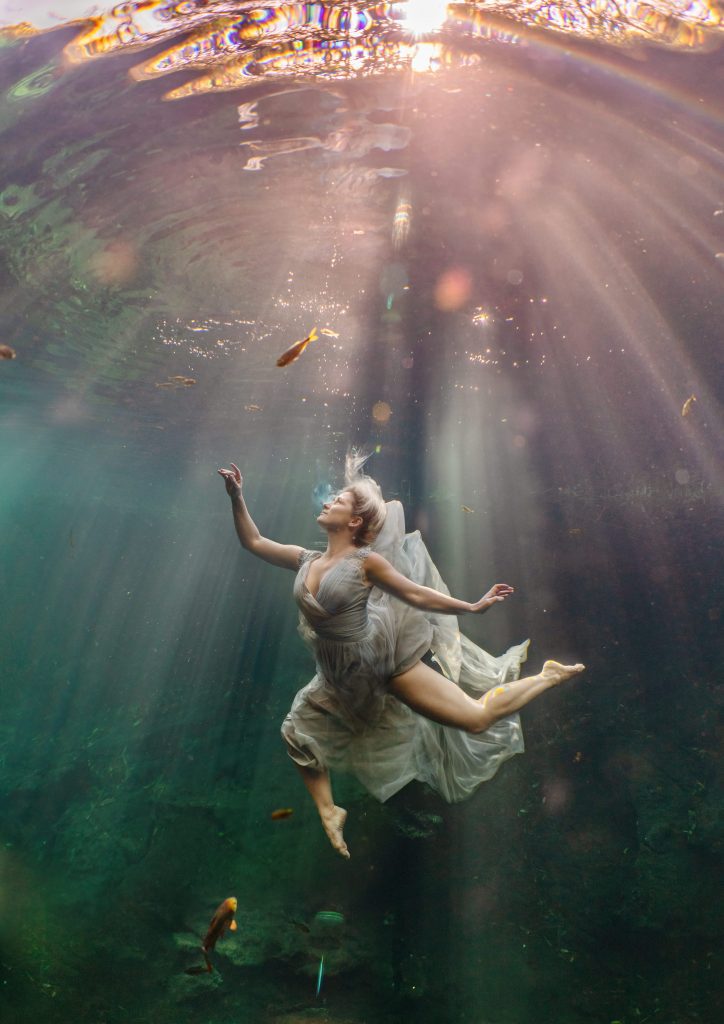
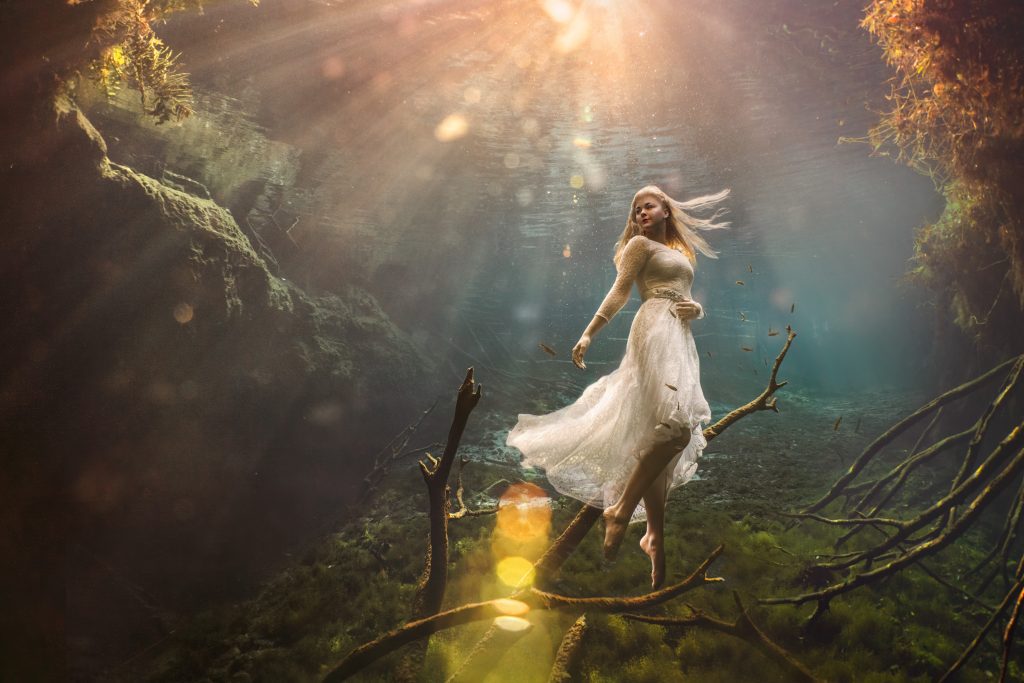
What are the ideal conditions for your shoots?
I always look for clear water, and for me it has to be outdoor openwater locations rather than swimming pools. I also like to seek out deep bodies of water with dark, interesting backdrops so a lot of location scouting happens beforehand. I mainly use natural light in my photographs so choosing the right time of day to shoot is important.
How does it feel to capture your models in the water?
I have always felt at peace and at ease in deep water environments and this sense of calm is something that I try to capture in my imagery. The experience of shooting models underwater has always been very enjoyable for me – it feels like a secret otherworldly place at times and I love to capture that. We often spend a lot of time laughing and generally having a fun time on shoots. It doesn’t feel like work, which is why I feel very lucky that this is my full-time career.
Why do you feel viewers are drawn to your photography?
People who have bought my work and hang it on their walls often give the best feedback about why they are drawn to a particular piece. The comment I receive most often from people is that my work is quite different from what they have seen before so that’s good to hear. I have a lot of ideas about what I am trying to convey in my work, whether that is trying to create something ethereal or sometimes it’s a reflection on how important it is that we protect our marine environments. How I see my work and how it is seen by other people can be quite different but that is one of the wonderful things about art I think.
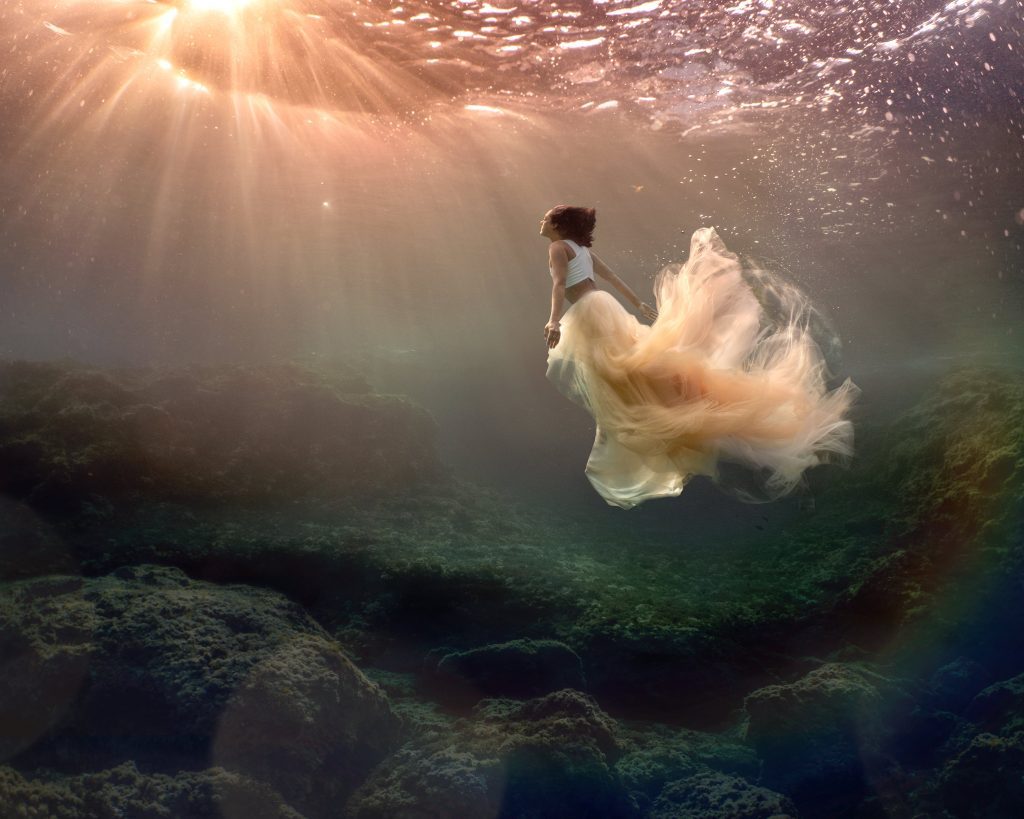
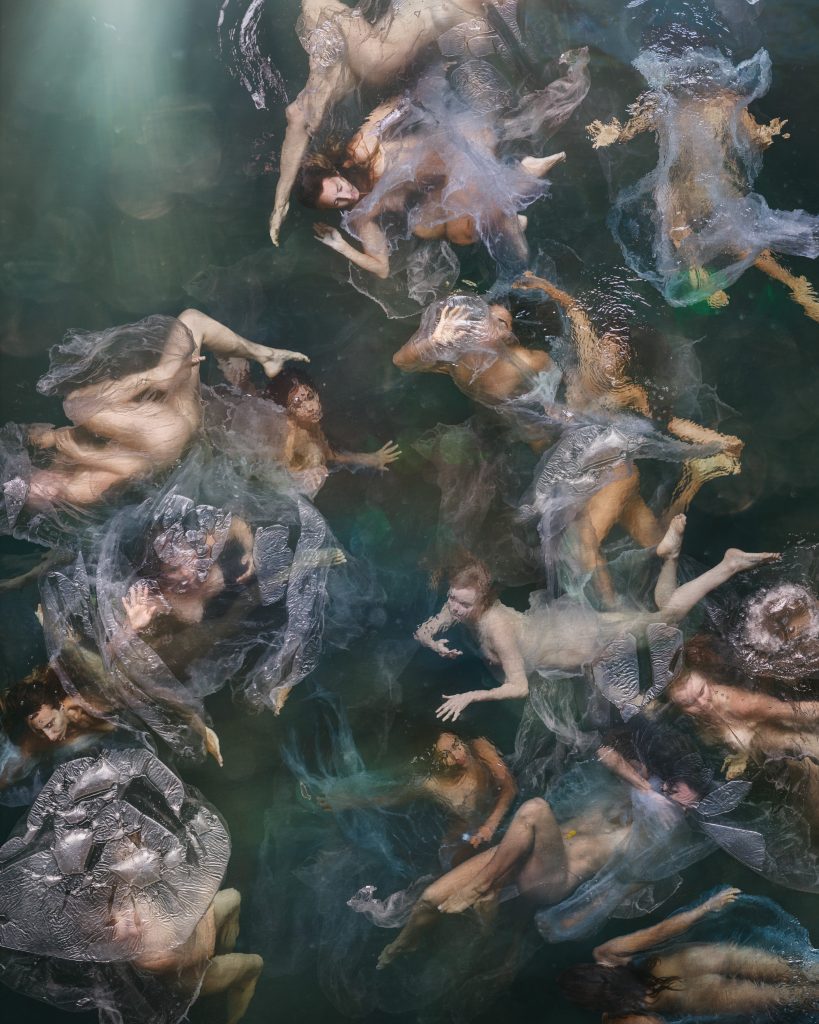
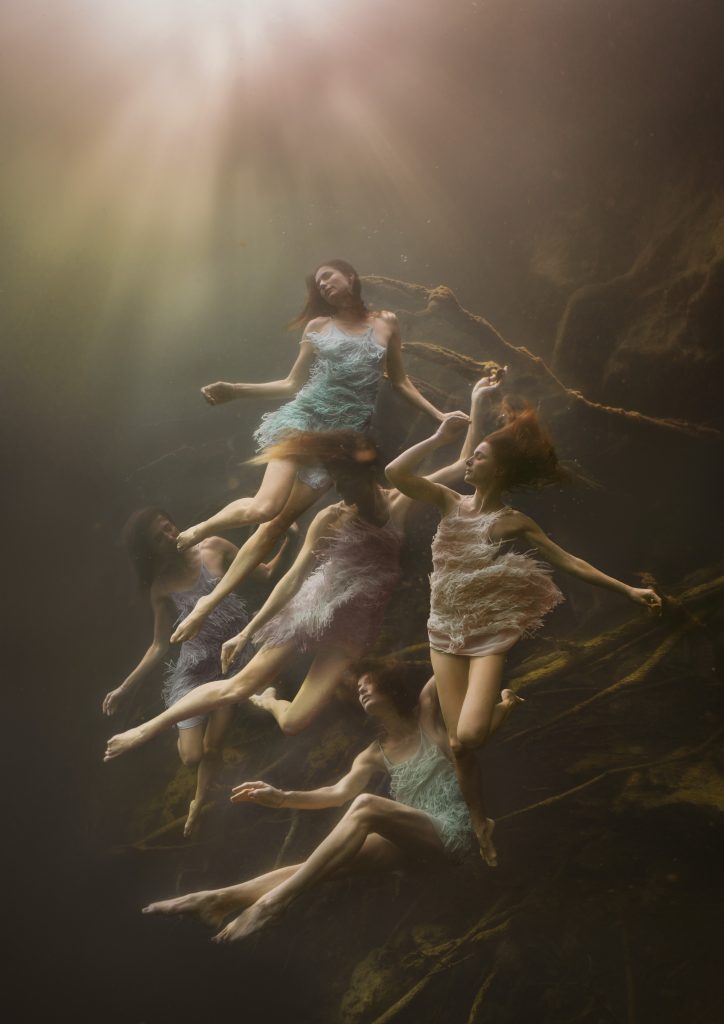
What are the challenges of your work, and how do you overcome them?
When shooting in the sea there are a lot of variables to consider. Things like tides, swell and sediment can greatly affect the conditions so I have around a dozen different weather apps on my phone to help me plan. For my models, wearing big dresses with lots of fabric that can potentially wrap around their legs is the biggest challenge. I always take safety very seriously and I am fortunate to work with models who are very capable freedivers.
How did your underwater photography begin, and how has it evolved over the years?
I began taking photographs underwater whilst on holiday, with people that I met whilst traveling. Soon after I started taking underwater photographs I began to train as a freediver, which in itself is an enjoyable hobby. Learning techniques to slow my heart rate and extend my breath hold has been very valuable for my photography. Nowadays, I go on several trips a year specifically to work and take models with me to destinations. The style of my work has developed over the years and hopefully it will continue to change. Making art underwater feels very experimental to me and I don’t think I’ll ever want to stop exploring ways to make new images.
Where is your favourite place to freedive and why? Do you have any favourite places in the UK?
I love freediving in the cenotes of Mexico because they are magical places with deep, crystal clear water. I also like to go to the Balearic islands as they are where I began my underwater photography journey. In the UK, my favourite spots are in Cornwall and Wales. The sea in these places can almost look like the Caribbean on a good day!
Discover more of Lexi Laine’s work on Instagram @lexilainephoto. Limited edition prints are also available to buy via her website. Join Outdoor Swimmer EXTRA to read our full feature on Lexi, plus other stories from the April issue.






